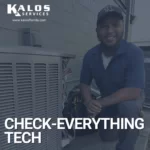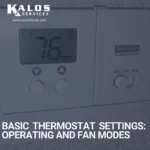We're entering the cooler season. Soon, it will be time to turn on the heat. In many parts of the country, people think we have enough of that in Florida! After sitting unused for more of the year, you shouldn't just turn your heater on and expect to be able to use it right away. Systems malfunction, parts fail, and using a heater for the first time during a cold snap might lead to a costly breakdown.
1. Order a complete preventive maintenance procedure.
No matter what sort of heating system your home uses, it's best to have it checked annually by a licensed air conditioning company. That will make sure that your unit starts with no issues.
However, be careful which company you trust to perform maintenance on your unit. While there are many trustworthy A/C companies, some companies use cheap and unhelpful A/C maintenance appointments to scam customers. For quality maintenance from a respectable A/C company, one should expect to pay anywhere from $70-$100.
2. Check your air filter.
Make sure your air filter is new and clean before you try to start your heat. One of the most common questions we get asked by customers is how often they should change them. The easy but frustrating answer is “whenever it's dirty.” We mean that every home is different and has different factors to consider (pets, children, and percentage of time the home is occupied, just to name a few). We suggest monitoring your A/C filter closely for about a month to find out what works best for your system. For more information on which filter you should use, check out this post.
3. Remove any obstructions near the unit.
This tip is one of the more obvious examples of what needs to be taken care of before using any HVAC unit. Still, it's an easy thing to forget. Many heaters are located in garages or attics and need to share their space with many other items. Be extra careful with how close your heater is to chemicals or flammable materials. Keeping a heater near flammable objects is an incredibly dangerous situation if left unattended. Give your unit a good amount of room on all sides from any clutter to avoid any issues.
4. Check your return and supply vents.
Take a look at the registers in each of the rooms in your home and put them into the open positions. Yes, do that even if you're not using a room. Many people will close registers in unused rooms to save money. Unfortunately, your air conditioning unit will actually be less efficient. Also, make sure there's no dust or debris clinging to the metal grates. If you see dust or debris, you can wipe the grates down relatively easily.
5. Once you've completed these steps, test your thermostat.
Once these steps have been completed, you're now ready to test your system. Turn your unit on and set it to heat mode at your thermostat. That will allow you to see if your system is ready to work properly in heat mode. If you don't have any issues, then you're prepared for the cold weather. Or, at the very least, you can be confident that you'll be warm inside!
To schedule a preventive maintenance procedure or learn more about the services we offer, call or text (352)-243-7099.
You may also fill out the form below, and we will get back to you soon:






